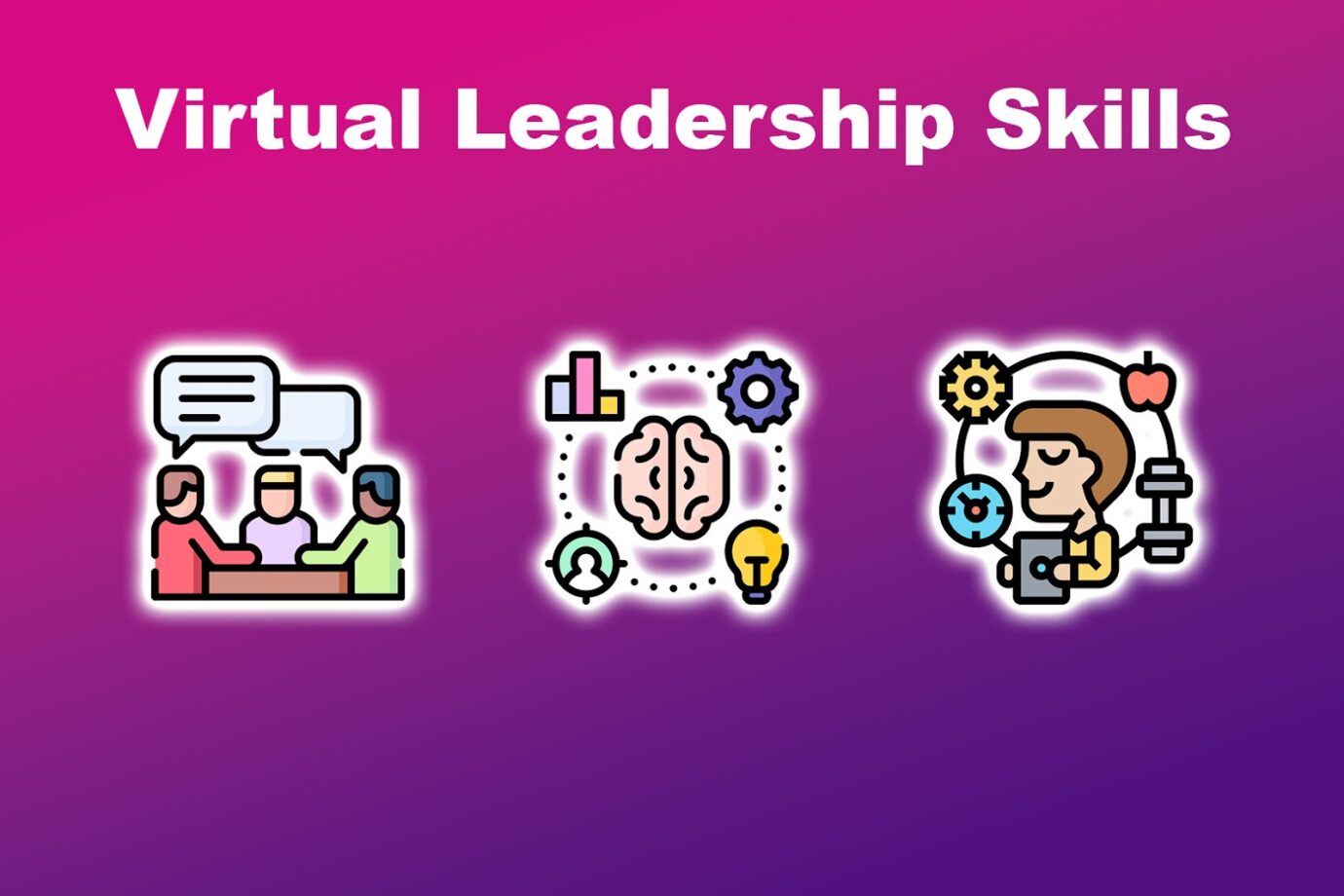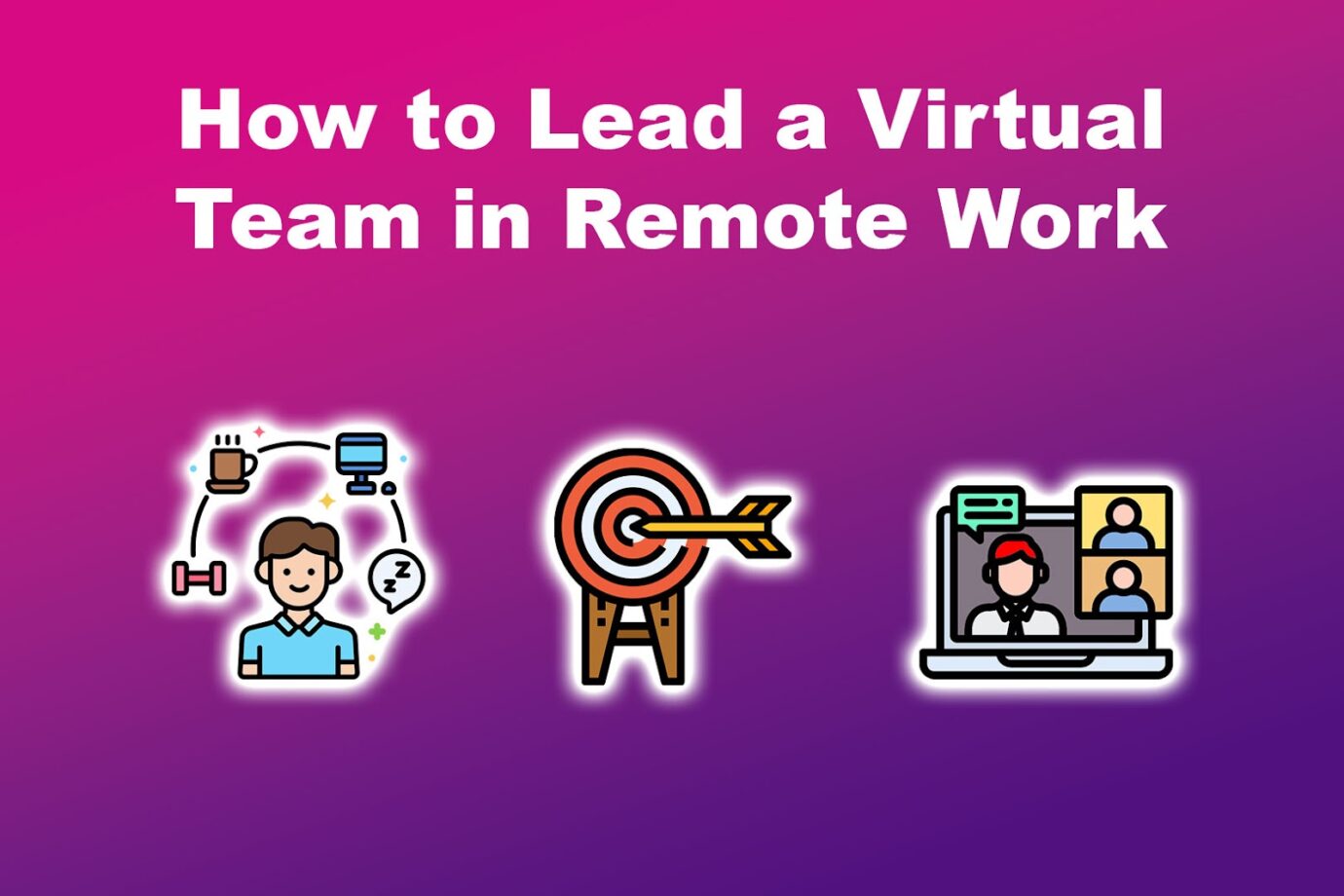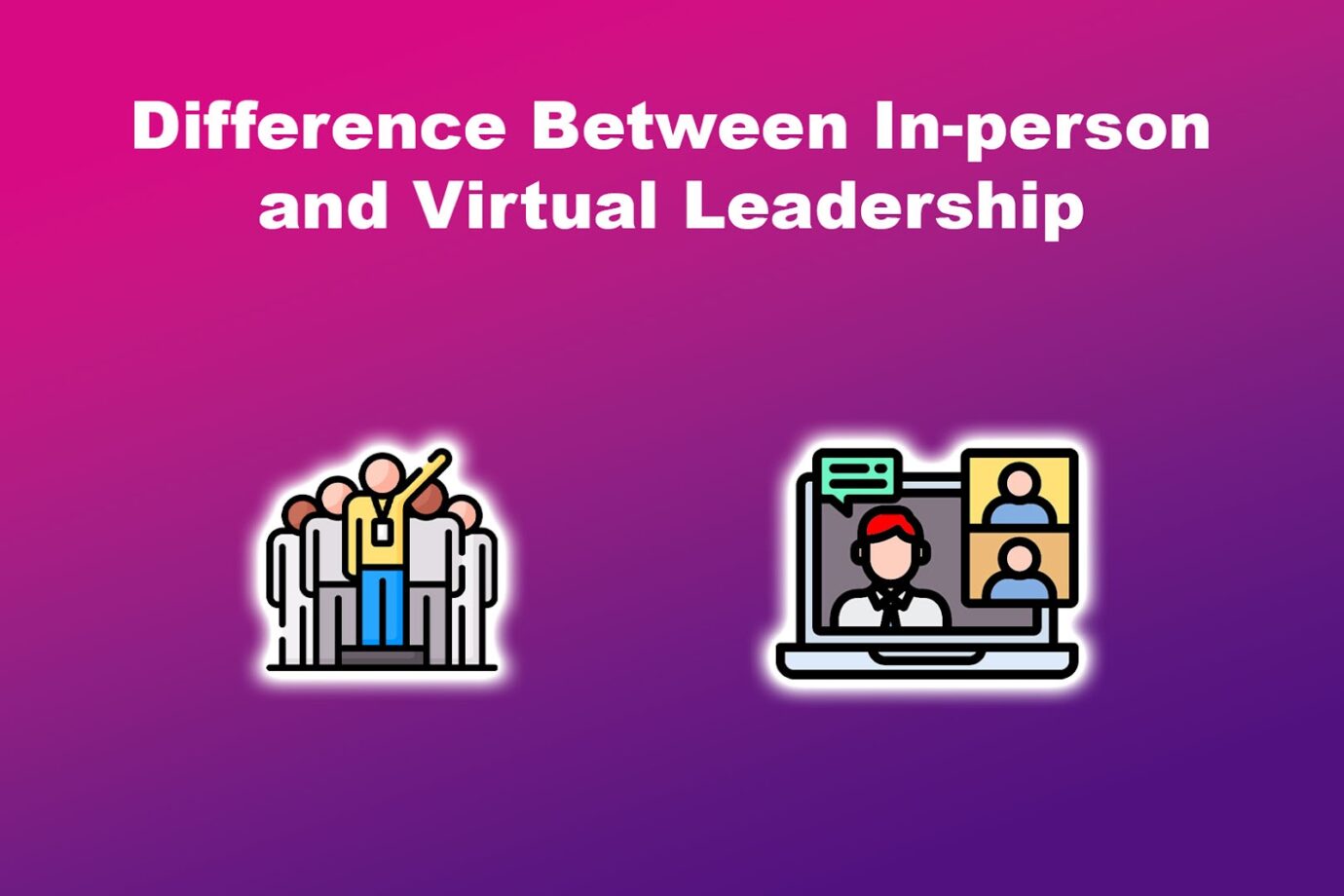Working remotely has shifted the way leaders and subordinates operate in the workplace. Coordinating a remote workforce requires a specific management to adopt a different leadership style. This is where virtual leadership skills come in.

Keep reading to learn who a virtual team leader is. We’ll also discuss things to do when leading a virtual team. Let’s dive right in!
What Is Virtual Leadership?
Virtual leadership is the act of managing a remote working team. Virtual leaders use technology to communicate with team members in different time zones and locations. Like in-person leaders, virtual leaders motivate employees to meet a company’s mission and vision.
Virtual leadership examples include working with a virtual assistant or a manager communicating with a team online in a different location.
Virtual team leaders also help in developing their teams through various activities. Virtual leadership activities include administering personality tests, regular team meetings, and remote happy hours.
Find out how you can keep yourself motivated while working from home here.
What Is the Importance of Virtual Leadership?
The importance of virtual leadership is to foster healthy communications within an organization. Without a virtual leader, remote teams may experience conflicts due to the lack of face-to-face communication. Virtual leadership is also crucial for helping employees maintain a healthy work-life balance.
Virtual leaders can help employees manage their time effectively by closely monitoring their work and tasks. This promotes a sense of accountability among team members. Virtual leaders also play a role in building team relationships and fostering trust among team members.
Read more on leading a remote team from American Public University.
5 Virtual Leadership Skills

Here are the 5 essential virtual leadership skills:
1. Knowledge About Technology
Technology is crucial for virtual leadership in managing and completing tasks. For example, project management apps like Trello, Asana, and Notion help assign and monitor the progress of different tasks.
As a virtual leader, it’s important to be adaptable. Be open to learning new tech tools and platforms for managing your team effectively.
2. Good Communication
Effective communication is crucial for virtual leadership. In virtual communication, it’s impossible to read non-verbal cues like in face-to-face interactions.
To bridge this gap, virtual team leaders should use messaging apps frequently. Platforms like Slack can assist in quick communication. Before sending a message, ensure it’s clear and easy to understand.
If you’re a project manager, have you ever wondered if you can work remotely?
3. Motivation and Empowerment
An excellent virtual leader should be able to motivate and empower their team to promote collaboration. Avoid overbearing and dictatorial leadership styles that discourage teamwork.
Motivate employees by recognizing well-performing members in the workgroup chat. For example, if you’re using Slack for communication, start a channel called “Applause,“ where you can publicly praise team members. Other employees applauding co-workers for their achievements will be empowering.
4. Be Organized
Good organization is crucial for virtual team leadership. Assign tasks in logical order to ensure smooth operation.
Set schedules for video calls and meetings and establish realistic deadlines. Consider assigning more challenging tasks at the beginning of the week or in the morning. Save less demanding tasks for the afternoons or days leading up to the weekend.
Want to improve your career as a virtual leader? Here are some virtual assistant resourcers that you can use for career improvement!
5. Have Empathy
Empathy is essential in developing personal connections. Being empathetic allows leaders to understand their subordinates’ needs, emotions, and experiences.
Virtual leaders can learn about different cultures to empathize with remote workers from abroad. They can also consider starting an online forum where employees can share challenges inside and outside work. This will help them empathize with their team.
Discover the essential leadership skills from Linkedin.
How to Lead a Virtual Team

Here are steps to lead a virtual team:
Step 1. Set Clear Goals
Communicate tasks and deadlines as clearly as you can. Share individual and company-wide goals.
Define each team member’s role and responsibilities to prevent miscommunication, which is more common in remote work. Consider briefing each team member on their responsibilities at the start of each project.
Step 2. Create a Routine and a Structure
Establishing a routine provides structure and direction. Set a designated start time for work, similar to traditional workplaces. Consider using time-tracking tools to monitor your team’s work hours.
For structure, have a list of dos and don’ts. This will help team members understand their boundaries and responsibilities at work.
Step 3. Schedule Regular Online Meetings
As mentioned, communication is crucial in virtual leadership. Regular meetings help build interpersonal relationships, increase unity, and boost productivity.
A lack of consistent meetings can lead to other team members feeling excluded, leading to a loss of trust. Team leaders can use the meetings to communicate and emphasize their expectations.
Here’s a list of tools for virtual teams to help you manage your team!
Step 4. Provide Constructive Feedback
Provide feedback to your team members throughout the process. Feedback can be positive and encouraging, not just critical. Acknowledge and appreciate employees who go above and beyond.
Since there is no in-person interaction, use a polite and friendly tone in your messages. Virtual meetings will be useful during this phase.
Learn more about leading a virtual team on Linkedin.
What Is the Difference Between Virtual Leadership and In-Person Leadership?

The difference between virtual and in-person leadership is in the interpersonal connection. In virtual leadership, leaders and subordinates rely on technology to communicate. In in-person leadership, team members physically meet daily; thus, they have a connection.
Virtual leadership may be challenging compared to in-person leadership. Due to increased remote work, virtual leaders now work with teams from diverse backgrounds.
That’s why online leaders must possess the correct virtual leadership skills, which may differ from in-person leadership.
Learn more about the difference between online and offline leadership from Linkedin.
What Leadership Style Works Best for a Virtual Team Leader?
The leadership style that works best for a virtual team leader combines transactional, transformational, and situational leadership approaches. Unlike traditional leadership, virtual leaders don’t have a one-size-fits-all approach due to the lack of interpersonal relations.
Here is an in-depth look at transactional, transformational, and situational leadership:
- Transactional.
In this type of leadership, a leader’s primary focus is meeting a company’s goals and objectives. The leader requires strong project management skills and should be in control to ensure everyone meets deadlines and is accountable. - Transformational.
This requires a leader to motivate, nurture, and inspire team members. It is all about fostering good relations, collaboration, and building trust. - Situational.
A leader doesn’t stick to one style; instead, they can adapt different approaches. This type of leadership necessitates adjusting to the processes and needs of working remotely.
Discover everything you need to know about distributed team management.
Virtual Leadership Skills Are Essential to Excel in Remote Work
Remote working relies on virtual leadership skills to ensure a cohesive working relationship. Some essential virtual leadership skills include communication, empathy, organization, and motivation.
Successfully leading a virtual team requires structure, regular online meetings, creating a routine that can be adapted remotely, and providing feedback.